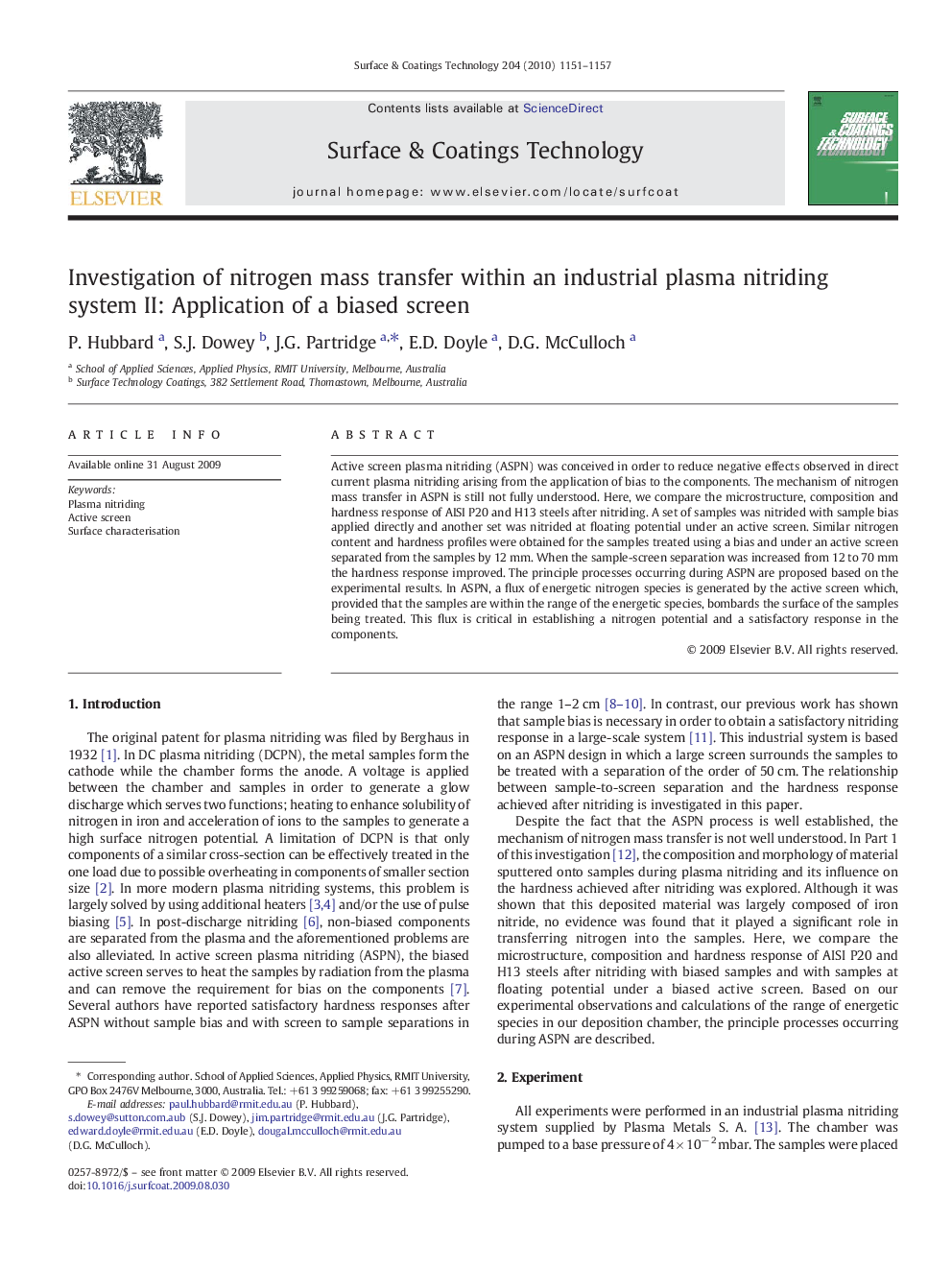| Article ID | Journal | Published Year | Pages | File Type |
|---|---|---|---|---|
| 1660069 | Surface and Coatings Technology | 2010 | 7 Pages |
Abstract
Active screen plasma nitriding (ASPN) was conceived in order to reduce negative effects observed in direct current plasma nitriding arising from the application of bias to the components. The mechanism of nitrogen mass transfer in ASPN is still not fully understood. Here, we compare the microstructure, composition and hardness response of AISI P20 and H13 steels after nitriding. A set of samples was nitrided with sample bias applied directly and another set was nitrided at floating potential under an active screen. Similar nitrogen content and hardness profiles were obtained for the samples treated using a bias and under an active screen separated from the samples by 12Â mm. When the sample-screen separation was increased from 12 to 70Â mm the hardness response improved. The principle processes occurring during ASPN are proposed based on the experimental results. In ASPN, a flux of energetic nitrogen species is generated by the active screen which, provided that the samples are within the range of the energetic species, bombards the surface of the samples being treated. This flux is critical in establishing a nitrogen potential and a satisfactory response in the components.
Related Topics
Physical Sciences and Engineering
Materials Science
Nanotechnology
Authors
P. Hubbard, S.J. Dowey, J.G. Partridge, E.D. Doyle, D.G. McCulloch,
